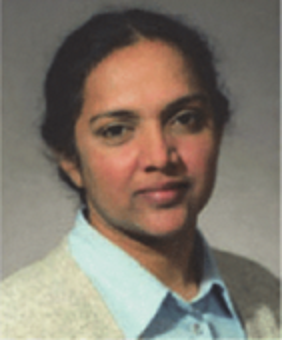Breakdown, Gas Discharge and Plasma Tutorial

Breakdown, Gas Discharge and Plasmas Tutorial (3:30 PM - 5:00 PM)
The IEEE Power and Energy Society / Industry Applications Society
Rochester Joint Chapter is proud to present
Prof. Shesha Jayaram, University of Waterloo, Ontario, and
Prof. Akira Mizuno, Toyohashi University of Technology, Japan
speaking breakdown, gas discharges, and plasmas.
To attend this event, please register at:
2022 Joint Conference on Electrostatics - Tutorial Program
Date and Time
Location
Hosts
Registration
-
 Add Event to Calendar
Add Event to Calendar
Loading virtual attendance info...
- Hilton Charlotte University Place
- 8629 JM Keynes Drive
- Charlotte, North Carolina
- United States 28262
Speakers
 Prof. Shesha Jayaram of Electrostatic Answers LLC
Prof. Shesha Jayaram of Electrostatic Answers LLC
Breakdown, Gas Discharges, and Plasmas
For more than a century discharges in gases have been studied considering the importance of gaseous insulation in power transmission and distribution, generation of high-power lasers, and generation of non-thermal plasma, to name a few. In this tutorial, fundamentals are revisited with a brief description on collisional ionization, charge carrier generation, and current growth due to electron multiplication under high electric fields. Townsend ionization and streamer breakdown theories are briefly explained under uniform electric fields, addressing the effects of gas pressure, electrode configurations, and voltage waveforms. Partial breakdown or partial discharges (corona discharges), resulting from local electric field enhancements in non-uniform fields, although a threat to insulation system, find numerous applications in the process industry. One such application of gas discharges in the generation of non-thermal plasma is covered in the second part of this tutorial.
Biography:
Shesha H. Jayaram (M'87-SM'97-F'08) is a professor and the director of the high voltage engineering laboratory at the University of Waterloo, Canada. Prior to joining the University of Waterloo, she served on the faculty at the University of Western Ontario as an Assistant Professor (1990-92) and as an Adjunct (1992-2003). Her research emphasizes solution-based outputs and is focused in four main areas: high voltage engineering and insulation diagnostics, high voltage engineering applied to environment, nanocomposite materials and pulse power applied to biotechnology. She has been an active member of the IEEE Dielectrics and Electrical Insulation and Industry Applications Societies and the Electrostatic Society of America. She is a registered professional engineer in the Province of Ontario, Canada.
Email:
Address:University of Waterloo, , Waterloo, Ontario, Canada, N2L3G1
 Prof. Akira Mizuno of University of North Carolina at Charlotte
Prof. Akira Mizuno of University of North Carolina at Charlotte
Breakdown, Gas Discharges, and Plasmas
Plasmas constitute the forth state of matter after solids, liquids, and gases. A plasma is an ionized gas composed of ions and electrons. A plasma may be formed by heating a gas to exceedingly high temperatures, or by exposing a gas to an intense electric field, as explained in the previous tutorial. In non-thermal plasmas (NTP), the temperature of the electrons is significantly higher than that of the bulk gas molecules (~273 K), and they are said to be “non-equilibrium” or “cold” plasmas. Various electrostatic processes use NTPs for charging objects and promoting chemical reactions. Electrons in NTPs have sufficient energy (1 – 10 eV) to break chemical bonds and to excite both atomic and molecular species. Compared to thermal plasmas, NTPs can be generated using relatively low input energy and they can produce high concentrations of charged particles and chemically active species at temperatures that do not alter the thermodynamic equilibrium of a reaction, which is why they have found application as promoters for a variety of different chemical reactions. In this tutorial, some of the most important NTPs used in electrostatic processes and plasma-chemical reactions, are introduced.
Biography:
Dr. Akira Mizuno is a professor emeritus at Toyohashi University of Technology. He has contributed for understanding back corona problem in electrostatic precipitation. He initiated to apply non-thermal plasma combined with catalysts in environmental remediation to remove gaseous pollutants in indoor air and NO removal for possible application in diesel exhaust.
He involved in various subjects using electrostatics and non-thermal plasma, which include; electrostatic precipitation of fine particles, cleaning of diesel exhaust, conversion of gases and cracking of heavy oil and sterilization of biological particles by NTP, manipulation of individual cells and DNA molecules. He is a Life Fellow of IEEE, and former president of Institute of Electrostatics Japan. Dr. Mizuno received his PhD degree in electrical engineering from University of Tokyo in 1978, and worked with IHI heavy industries Co., Ltd., then joined with TUT.
Email:
Address:Toyohashi, Aichi, Japan, 441-8580
Agenda
2022 Joint Conference on Electrostatics - Tutorial Program
Breakdown, Gas Discharges and Plasmas (3:30 PM - 5:00 PM)
Prof. Shesha Jayaram, University of Waterloo, Ontario, and
Prof. Akira Mizuno, Toyohashi University of Technology, Japan
IEEE Power and Energy Society / Industry Applications Society

